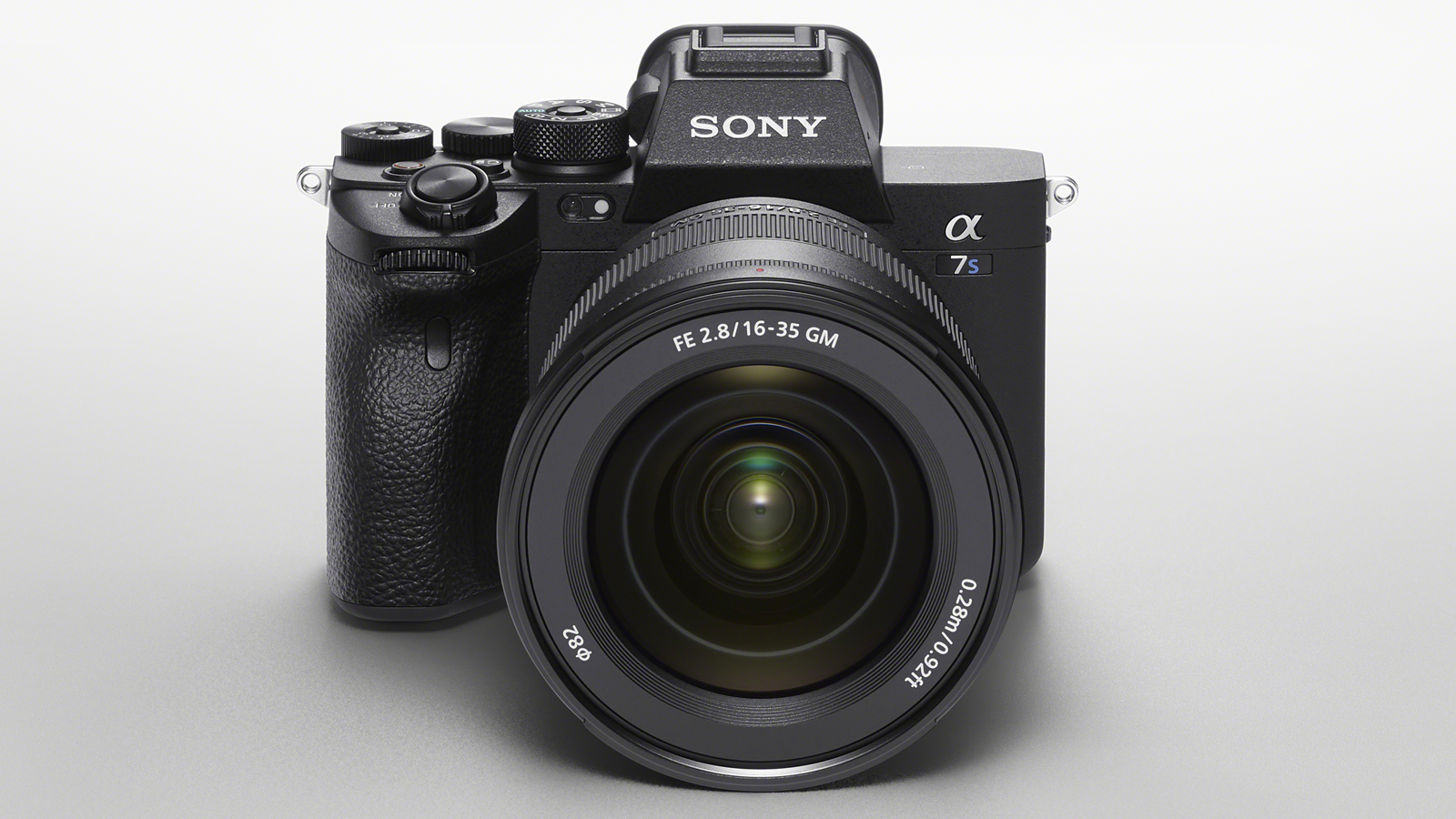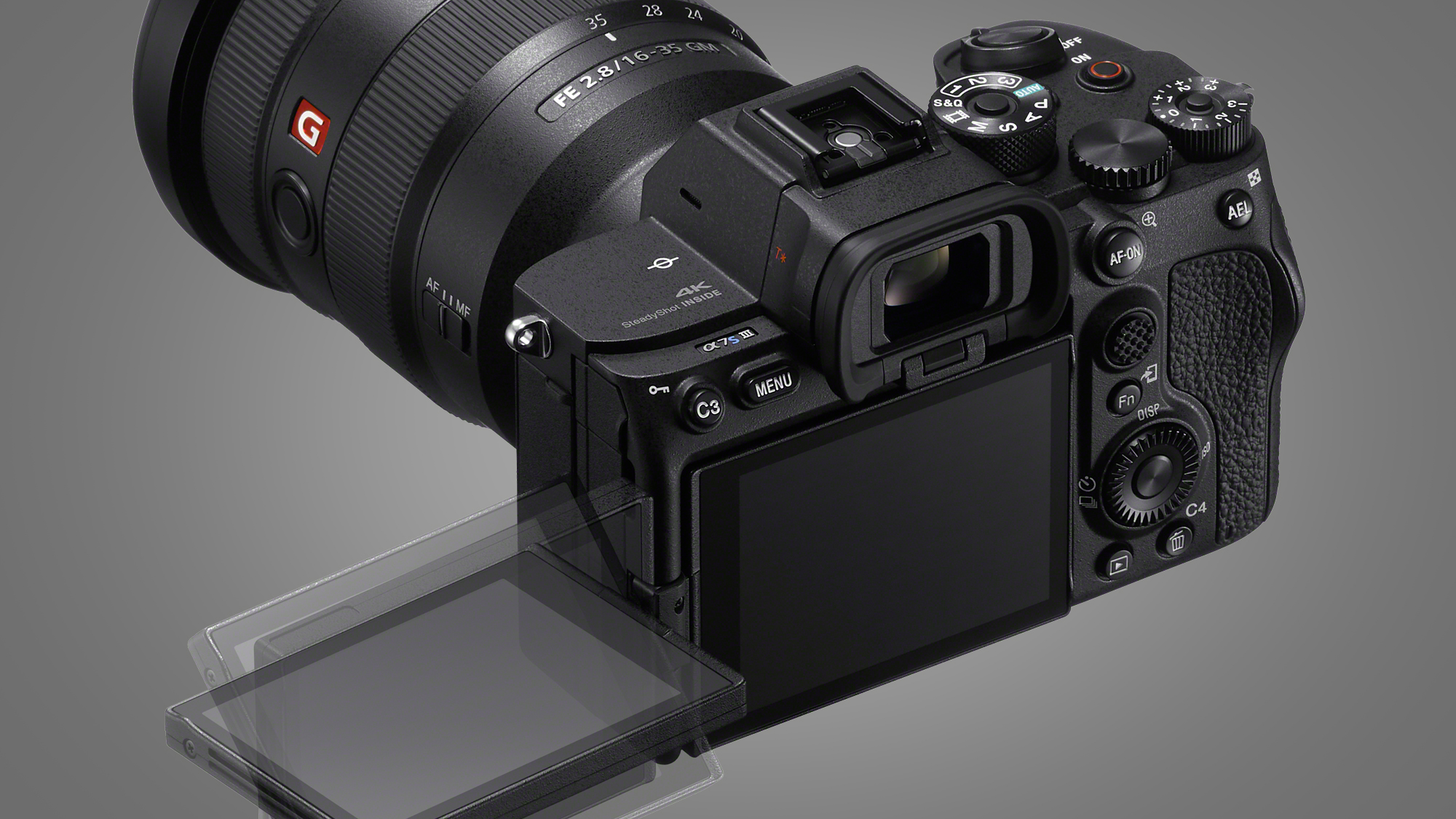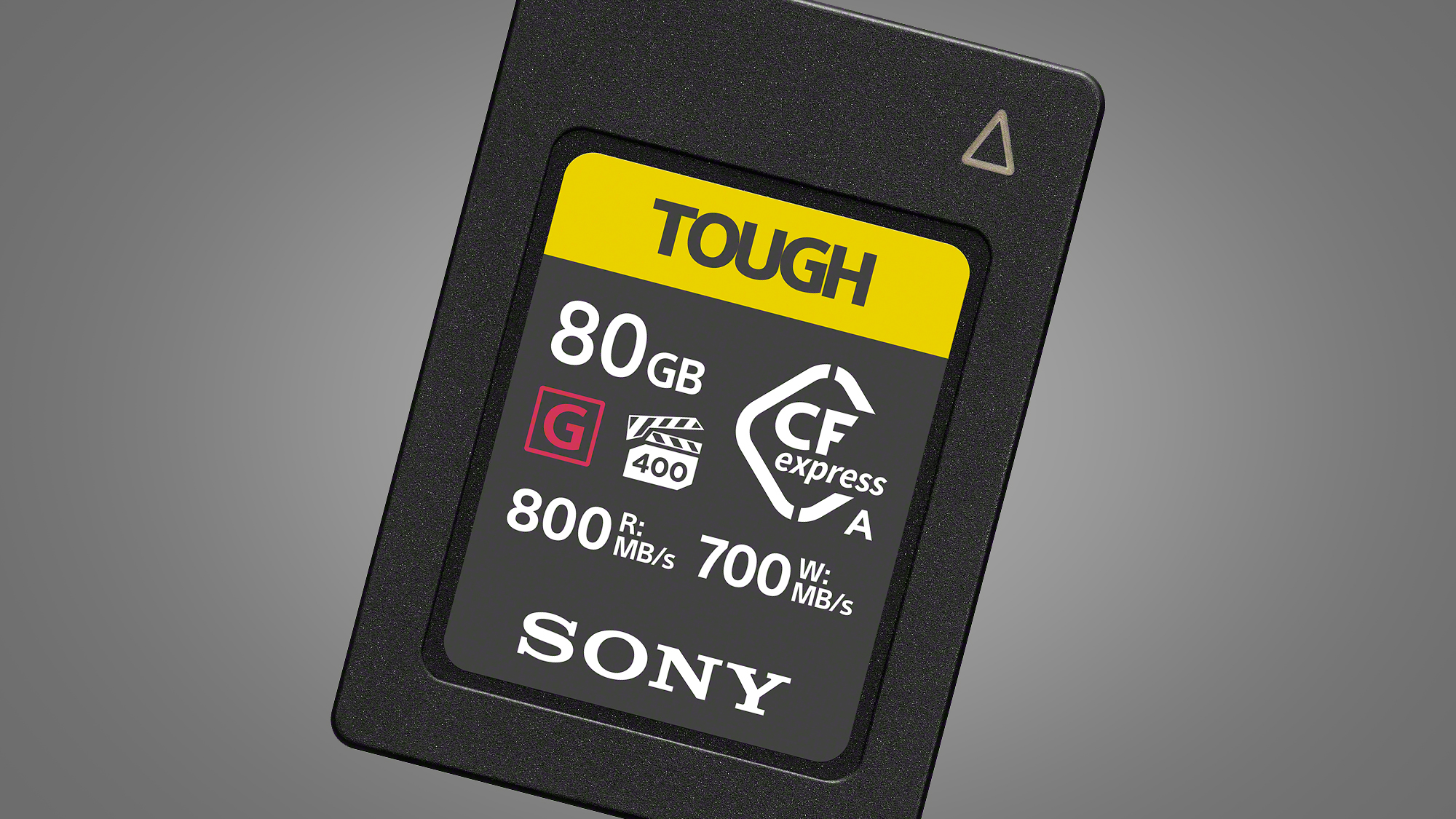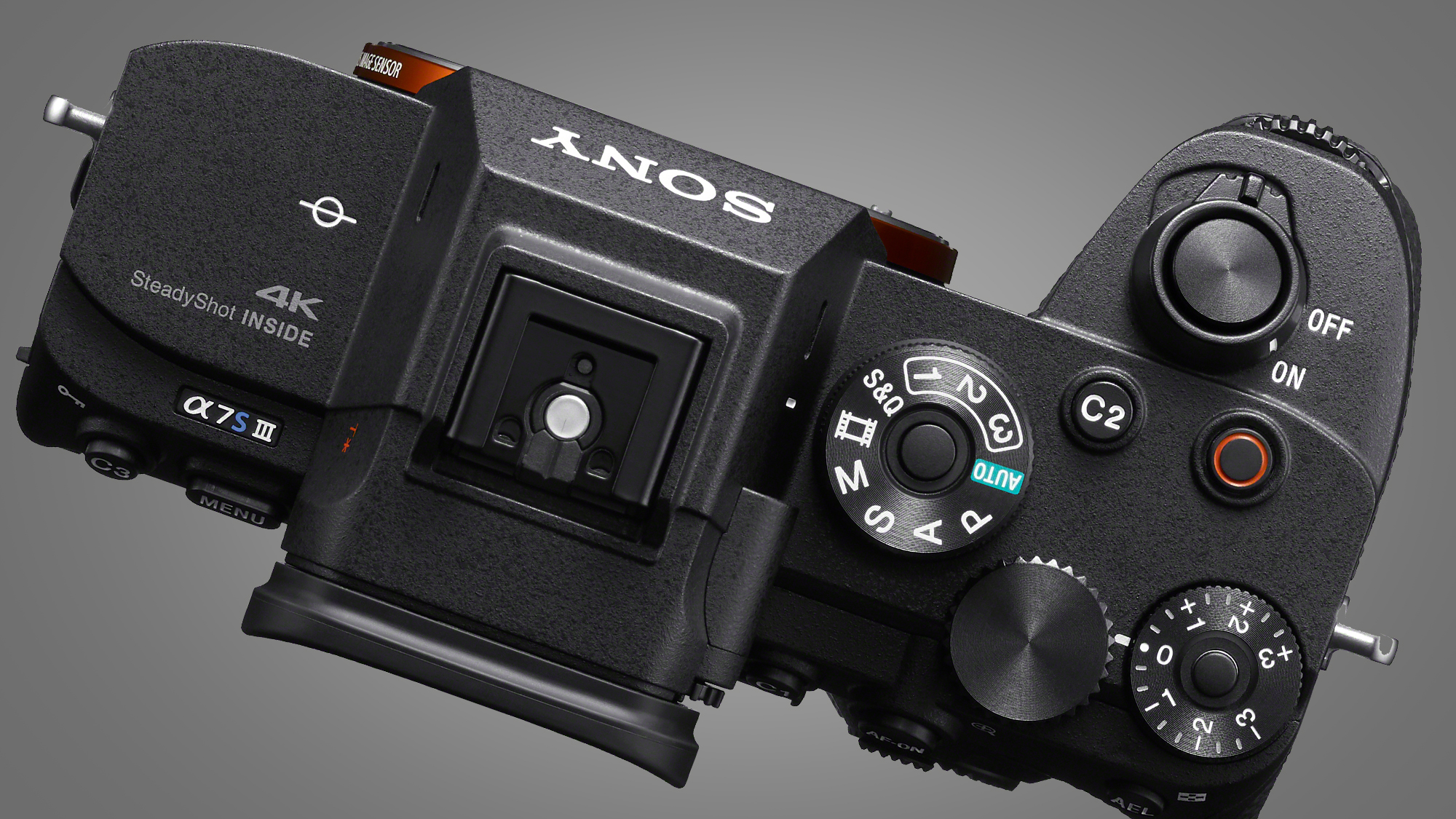Sony A7S III arrives to reclaim video crown from Canon EOS R5 – read our full review
Meet the world's best 4K mirrorless camera

The Sony A7S III has finally arrived to reclaim the mirrorless video camera hype from the Canon EOS R5 – and our full review concludes that the 4K full-framer has emphatically done just that. (To jump ahead to our full verdict, read our full Sony A7S III review).
While we haven't yet given the Canon EOS R5 the full review treatment, the five-star Sony A7S III offers a number of practical advantages overs its rival for run-and-gun filmmakers, including the ability to shoot 4K/60p for up to an hour non-stop, and superior battery life.
The two cameras are different beasts, with the A7S III more clearly aimed at videographers than its all-rounder rival. This is most obvious from the A7S III's 12.1MP resolution, which is on the low side for stills photographers, but ideal for 4K video because it allows for full pixel readout without the need for processor-intensive techniques like pixel binning.
The camera also has a new sensor, the world's first back-illuminated one at this resolution, ensuring that you get twice the readout speed of the five-year-old Sony A7S II. As our review found, this brings advantages like reduced rolling shutter, which can otherwise cause the skewing of objects like buildings when you pan the camera.
A new sensor is far from the only addition to the A7S III. As Sony promised in its launch build-up, the camera has had a complete makeover compared to the A7S II, which includes a new electronic viewfinder (EVF) with an incredible 9.44 million-dot resolution, a new Z battery that promises a 60% performance improvement, and a fully articulating touchscreen that flips all the way round to the front for those who like shooting to camera.
The Sony A7S III's body, which has a lot in common with the Sony A7R IV, has also been upgraded, with improved dust and moisture resistance, plus a bigger grip and larger buttons.
- These are the best cameras you can buy right now
- Read our in-depth Sony A7S III review
- Sony A7S III vs A7S II: 10 key differences you need to know

Put a 4K in it
While these physical upgrades and a new touch interface improve the A7S III's usability, it's the performance improvements that will be most exciting to filmmakers who've been waiting years for an A7S II successor.
Get daily insight, inspiration and deals in your inbox
Sign up for breaking news, reviews, opinion, top tech deals, and more.
Unlike the Canon with the EOS R5, Sony decided against stretching to 8K resolution, and has focused instead on maximizing its video flagship's 4K skills.
The A7S III can shoot up to 4K/60p with 10-bit color depth and 4:2:2 color sampling internally, and this is the case for all recording formats. It's a big and necessary upgrade on its 8-bit predecessor, and helps to give color graders more flexibility in post-production bringing the Sony A7S III in line with rivals like the Panasonic GH5.
Because the A7S III's 12.1MP sensor doesn't need do to any line skipping or pixel binning to produce 4K video, it doesn't have the heat-related restrictions of Canon's EOS R5 and EOS R6. According to Sony, it can record up to an hour of 4K/60p continuously, and in our review we didn't get any overheating warnings, with recording times restricted more by card size and battery life.
Slow-mo fans will be pleased to see a range of high-frame-rate recording options too, with the A7S III capable of shooting 4K/120p (with a slight 1.1x crop) and Full HD at 240p. Sony also claims the A7S III has a dynamic range of 15 stops, with the sensitivity expandable to ISO 409,600.
While it's very much a video-first hybrid camera, there are also a few treats for photographers, despite the somewhat limited 12MP resolution. The A7S III's autofocus sensitivity works down to -6EV, and it can also shoot up to 10fps bursts (with autofocus and auto-exposure). If you're using one of the new CFexpress Type A memory cards, the buffer has room for over 1,000 uncompressed raw files.

Card conundrums
One of the more curious aspects of the Sony A7S III is that it's the first camera to support CFexpress Type A cards. It has two dual-format card slots, both of which support UHS-II SD cards and the new CFexpress Type A.
If you're not familiar with CFexpress, this is a new card format that has the data speeds to support the demands of today's high-end cameras. Just as SD cards have variants like microSD and SD, CFexpress cards will be available in three variants: Type A, Type B and Type C.
All of these are based on the same CFexpress 2.0 specs and tech, but differ in size, and in the number of data transfer lanes they have available. We've already seen the Canon EOS R5 and Canon 1DX Mark III support Type B cards, but the Sony A7S III is the first one to support CFexpress Type A.
What does this mean for the A7S III? Well, fortunately you can still continue to use your UHS-II cards in both of its card slots, but if you want to unlock the upper echelons of its performance you'll need to shell out for a new card and reader.
Right now, they're not actually available to buy, but Sony says an 80GB CFexpress Type A card will cost $199.99 / £210 / AU$369, while a 160GB one will set you back $399.99 / £400 / AU$699. You'll also have to factor in a new card reader, which will cost $119.99 / £130 / AU$249.
- Best microSD cards: flash memory for cameras, drones and more
- Best cameras for vlogging in 2020
- Best cameras in 2020: the top DLSRs and mirrorless models you can buy right now

Loaded price
Clearly, the Sony A7S III isn't for mirrorless beginners and it does come with a suitably professional price tag.
The body-only price is $3,499.99 / £3,800 / AU$5,999, with availability expected from September. That is significantly higher than the Sony A7S II's launch price, and does underline the A7S III's status as something of a niche camera.
That said, demand for mirrorless video cameras is on the rise and the Sony A7S III is the best one we've tested so far – while you wait for pre-orders to open, you can tuck into our full Sony A7S III review.

Mark is TechRadar's Senior news editor. Having worked in tech journalism for a ludicrous 17 years, Mark is now attempting to break the world record for the number of camera bags hoarded by one person. He was previously Cameras Editor at both TechRadar and Trusted Reviews, Acting editor on Stuff.tv, as well as Features editor and Reviews editor on Stuff magazine. As a freelancer, he's contributed to titles including The Sunday Times, FourFourTwo and Arena. And in a former life, he also won The Daily Telegraph's Young Sportswriter of the Year. But that was before he discovered the strange joys of getting up at 4am for a photo shoot in London's Square Mile.